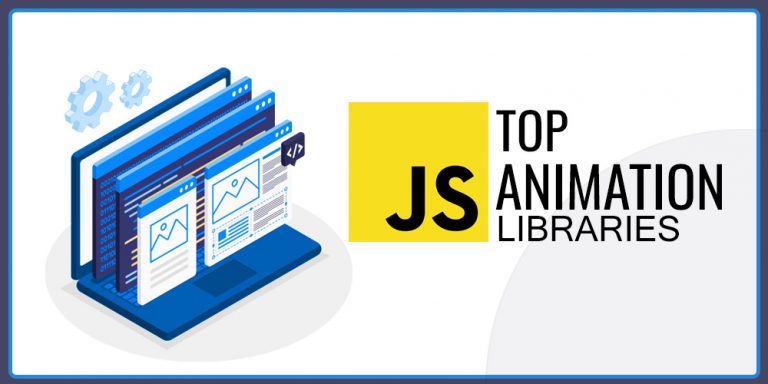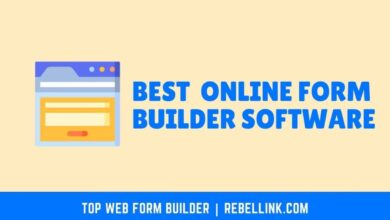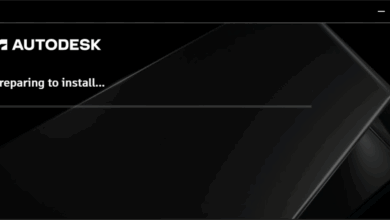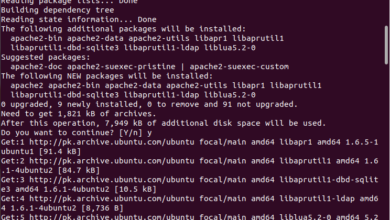Top JavaScript Animation Libraries A Deep Dive
Top JavaScript animation libraries set the stage for crafting dynamic and engaging web experiences. From subtle transitions to complex 3D effects, these libraries empower developers to bring websites to life. This exploration delves into the best options, examining their features, performance, and community support, providing a comprehensive guide for choosing the ideal library for your next project.
We’ll cover everything from fundamental concepts like easing functions and animation types to advanced techniques like SVG and canvas animations, along with practical examples and performance considerations. Understanding the nuances of these libraries will help you build visually stunning and responsive websites, whether for simple animations or intricate interactions.
Introduction to JavaScript Animation Libraries
JavaScript animation libraries are essential tools for creating dynamic and engaging user interfaces. They simplify the process of adding smooth, visually appealing animations to websites and applications, enhancing user experience and making interactions more intuitive. These libraries abstract away the complexities of low-level animation, allowing developers to focus on the design and functionality of the animations rather than the underlying code.Using JavaScript animation libraries provides significant benefits, such as improved performance, enhanced visual appeal, and reduced development time.
They often offer pre-built functionalities for common animation types, minimizing the amount of custom code required. This leads to more efficient development cycles and cleaner, more maintainable codebases.
Common Use Cases
Animation libraries are ubiquitous in modern web development, enabling a wide array of functionalities. They are crucial for creating interactive elements like smooth transitions between pages, animated loading indicators, visually appealing UI components, and sophisticated visual effects. From subtle hover effects to complex 3D models, these libraries empower developers to craft dynamic and engaging user experiences. Typical use cases include:
- Page transitions: Seamless transitions between different sections or pages of a website, enhancing user flow and creating a polished aesthetic.
- UI animations: Animated button clicks, form field highlighting, and other interactive UI elements improve user engagement and provide feedback.
- Visual effects: Animations like bouncing effects, fading elements, and sliding panels enrich the visual appeal and interactivity of web pages.
- Data visualizations: Animated charts and graphs help convey information more effectively, making complex data easily understandable.
Key Factors in Selecting an Animation Library
Choosing the right animation library depends on specific project needs. Several factors should be considered when making a decision:
- Performance: The library should be optimized for speed and efficiency, particularly when handling complex animations on large websites or applications.
- Ease of use: A straightforward API and comprehensive documentation are crucial for quick integration and efficient development.
- Features: The library should offer the necessary animation types (e.g., 2D, 3D, transitions) and customization options to meet specific design requirements.
- Community and support: A strong community and readily available support resources are beneficial for troubleshooting and seeking assistance when encountering challenges.
- Scalability: The library should be suitable for scaling to accommodate future project requirements and potential growth.
Animation Library Categories
Different animation libraries cater to various animation needs. This table compares common animation library categories:
| Category | Description | Example Use Cases |
|---|---|---|
| 2D Animations | Focuses on animations within a two-dimensional plane. | Character movement, UI interactions, simple transitions. |
| 3D Animations | Enables the creation of animations in a three-dimensional space. | Complex graphics, interactive 3D models, virtual tours. |
| Transitions | Handles smooth transitions between different states or elements. | Page transitions, UI element animations, modal dialogs. |
| Customizable Animations | Offers extensive customization options and control over animations. | Complex visual effects, unique animation styles, highly customized UI interactions. |
Popular JavaScript Animation Libraries
JavaScript animation libraries empower developers to create engaging and dynamic user interfaces. These libraries abstract away the complexities of low-level animation, allowing for more efficient and elegant code. Choosing the right library depends heavily on project needs, ranging from simple transitions to complex, interactive animations.
Top Animation Libraries
Several JavaScript animation libraries dominate the landscape. Choosing the best one depends on the specific requirements of the project. Some libraries excel at smooth transitions, while others are designed for complex animations and interactions. The libraries listed below are generally considered among the most popular and feature-rich options.
- Animate.css: A CSS-based animation library. It provides a collection of pre-built animations that can be easily applied to HTML elements. Its strength lies in its simplicity and wide range of effects. It’s very lightweight, requiring minimal setup. A drawback is that it’s less flexible for custom animation creation compared to JavaScript-based libraries.
The core features focus on basic animations, transitions, and effects. Its ease of use is high, making it quick to learn and implement.
- GSAP (GreenSock Animation Platform): A powerful JavaScript library known for its versatility and performance. It offers extensive control over animation, including precise timing, complex interactions, and advanced features like motion blur. Its core features encompass sophisticated animation control, advanced timing functions, and extensive API for custom effects. GSAP’s strength lies in its control and capabilities, while a steeper learning curve compared to other libraries might be a drawback.
Top JavaScript animation libraries are awesome, offering smooth transitions and dynamic effects. Speaking of impressive deals, did you hear about the Athletics agreeing to a hefty $60 million, 5-year contract with slugger Brent Rooker? This news is definitely making waves, but let’s get back to the cool animations. Libraries like GreenSock and Anime.js are game-changers for creating engaging user experiences.
It is widely used for creating intricate and demanding animations.
- Anime.js: This library excels at creating smooth, versatile animations. It is designed to be straightforward and easily integrable into existing projects. The library offers an intuitive API for controlling animations and provides an excellent balance of flexibility and ease of use. Its core functionalities encompass animation parameters, timing functions, and ease-of-use. It is a good option for projects requiring a mix of simple and slightly more advanced animations.
- Velocity.js: This library is built for smooth transitions and animations. It’s particularly effective for animating various CSS properties. It’s well-suited for quick animations and updates to elements on the page. Its core functionalities are focused on smooth transitions and CSS property updates. The ease of use is high, making it relatively straightforward to pick up and use.
A slight drawback is a slightly less comprehensive feature set compared to GSAP.
- Lottie: A library specializing in animations created in Adobe After Effects using the Bodymovin format. It provides a way to render these animations in web browsers. Lottie is specifically tailored for vector-based animations and leverages the efficiency of the Bodymovin format. The library’s strength is its support for high-quality animations from other design tools. A potential limitation is its dependency on the animation format from After Effects.
Its core features include rendering After Effects animations and support for high-quality animation formats.
Browser Compatibility
Browser support is a critical consideration when selecting an animation library. The table below displays the compatibility of the aforementioned libraries with various browsers.
| Library | Chrome | Firefox | Safari | Edge | IE |
|---|---|---|---|---|---|
| Animate.css | Yes | Yes | Yes | Yes | No |
| GSAP | Yes | Yes | Yes | Yes | No |
| Anime.js | Yes | Yes | Yes | Yes | No |
| Velocity.js | Yes | Yes | Yes | Yes | No |
| Lottie | Yes | Yes | Yes | Yes | No |
Key Features and Functionalities

JavaScript animation libraries provide a powerful toolkit for crafting dynamic and engaging user interfaces. They abstract away the complexities of low-level animation, allowing developers to focus on the visual effects rather than the underlying code. This streamlined approach dramatically boosts development speed and allows for intricate animations to be implemented with relative ease.These libraries typically handle the underlying calculations and rendering, offering a wide array of features and functionalities to tailor the animations to specific needs.
From simple transitions to complex, multi-layered effects, these tools are indispensable for modern web development.
Essential Features
Animation libraries often share core features that streamline the animation process. These include:
- Ease-of-use API: Intuitive interfaces simplify the implementation of animations, enabling developers to focus on the design aspects rather than the intricate details of rendering. The libraries provide a high-level abstraction layer, shielding the developer from the complexities of managing animation timing and rendering.
- Support for various animation types: From smooth transitions between elements to intricate transformations, the libraries encompass a diverse range of animation styles. These libraries offer a wide range of animation types to cater to diverse visual requirements, ranging from subtle changes to dramatic effects.
- Customization options: Flexibility in customizing animation properties enables developers to achieve specific visual effects. This can involve fine-tuning the timing, direction, and intensity of animations to create visually appealing and engaging user experiences.
Animation Types
JavaScript animation libraries support different types of animations, each with unique characteristics.
- Transitions: Transitions smoothly alter the properties of an element over time, creating a seamless visual experience. They are ideal for simple changes like fading in or out elements, resizing, or changing colors.
- Animations: Animations encompass a broader range of effects, often involving more complex transformations and timelines. They allow for more intricate movements and transformations than transitions.
- Transformations: Transformations manipulate the visual appearance of an element, such as scaling, rotating, skewing, and translating. They provide a powerful way to manipulate the visual positioning and appearance of elements.
Handling Complex Animations
Animation libraries excel at handling intricate animations. They provide the tools to chain multiple animations, coordinate movements across multiple elements, and implement complex timing sequences. For instance, a library could manage the animation of an element sliding into view, followed by a fading effect, and finally, a rotation around its axis.
Customizing Animation Properties
Animation libraries often provide a range of properties to customize the appearance and behavior of animations. These properties can include:
- Duration: The length of time an animation takes to complete. This is often expressed in milliseconds.
- Timing function (easing): Controls the rate at which the animation progresses, enabling smooth and visually appealing transitions.
- Delay: The amount of time to wait before the animation begins.
- Iteration count: Specifies how many times an animation should repeat.
Easing Functions
Easing functions play a crucial role in creating smooth and natural-looking animations. They modulate the speed of the animation over time.
“Easing functions control the rate of change of an animation, allowing for a more natural and engaging visual experience.”
The library typically offers a range of built-in easing functions, each with a distinct visual effect.
Example Easing Functions
| Easing Function | Visual Effect |
|---|---|
| Linear | Constant speed throughout the animation. |
| Ease-in | Slow start, accelerating to the end. |
| Ease-out | Fast start, decelerating to the end. |
| Ease-in-out | Slow start, accelerates to the middle, and then decelerates to the end. |
| Bounce | Creates a bouncing effect. |
| Elastic | Creates a spring-like or elastic effect. |
Performance Considerations: Top Javascript Animation Libraries
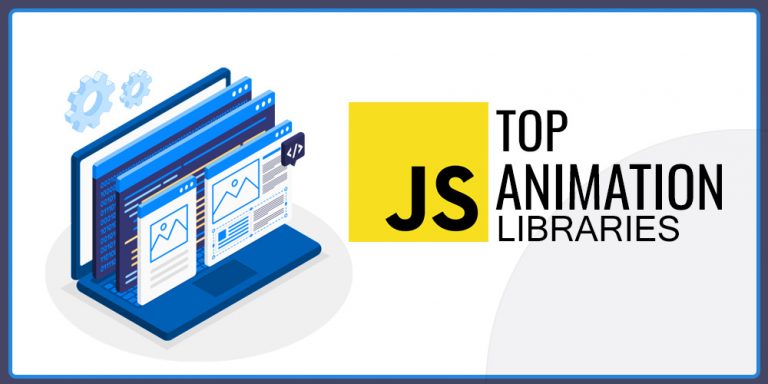
Animation libraries, while enhancing visual appeal, can significantly impact website performance if not used judiciously. Optimizing for speed and responsiveness across different devices and browsers is crucial for a positive user experience. Understanding the performance implications of various animation techniques and libraries is vital for building high-performing websites.
Impact on Website Performance
Animation libraries, by their nature, introduce additional code and resources into the page load. This can increase the initial load time and, if not optimized, lead to decreased performance during playback. Heavy animations, especially complex ones, can strain the browser’s rendering capabilities, potentially leading to lag or poor responsiveness. The impact on performance is highly dependent on the library’s implementation, the complexity of the animation, and the overall structure of the website.
Optimizing for Different Devices and Browsers
Delivering smooth animations across various devices and browsers requires careful consideration. Responsive design principles should be applied to animations, adjusting complexity based on screen size and device capabilities. Using appropriate media queries and detecting browser capabilities (like hardware acceleration support) can help tailor animations to different environments. Employing progressive enhancement is also key; providing basic functionality without animations for slower devices, and then enhancing with animations for faster devices.
This ensures accessibility and performance.
Reducing Animation Library Load Time
Minimizing the load time of animation libraries is crucial for quick page loading. Techniques like code splitting, lazy loading, and using a Content Delivery Network (CDN) can significantly reduce the initial load time. Careful selection of a library tailored to specific animation needs and avoiding unnecessary features can also reduce the amount of code downloaded.
Handling Animations on Large Datasets or Complex Interactions
Animating large datasets or complex interactions requires sophisticated techniques. Chunking the data and animating smaller portions at a time can prevent the browser from being overwhelmed. Utilizing asynchronous operations and efficient data structures (e.g., trees or graphs) for organizing and processing the data is critical. The use of a library with optimized algorithms for handling complex interactions can improve performance.
Employing techniques like animation throttling and rate limiting can prevent animations from consuming excessive resources during intense interactions.
Comparing Animation Techniques for Performance
Different animation techniques have varying performance implications. For example, CSS animations, due to their native browser support, often provide superior performance compared to JavaScript-based animations for simple transitions. However, JavaScript libraries offer greater flexibility for complex animations and interactions, especially when combined with sophisticated data manipulation. Evaluating the specific requirements of the animation and choosing the appropriate technique is essential for optimal performance.
Performance Benchmarks
A table showcasing performance benchmarks for different animation libraries under varying conditions can provide valuable insight. Different animation libraries may perform differently based on the type of animation, the complexity of the interaction, and the hardware capabilities of the device. These benchmarks should be considered in the context of the specific use case and the expected user experience.
Talking about top JavaScript animation libraries, it’s fascinating how these tools can bring dynamic visuals to websites. For example, libraries like GreenSock and Anime.js offer impressive control and flexibility, perfect for everything from smooth transitions to complex character animations. Meanwhile, news broke today that the Warriors ruled out Steph Curry for Jimmy Butler’s return game at Miami warriors rule out steph curry for jimmy butler return game at miami , which, in a way, highlights the potential for animation libraries to dynamically show player absence in a virtual game.
Regardless of the basketball news, these libraries remain invaluable for bringing interactive elements to web design.
Such a table, while not definitive, can serve as a helpful guide for comparing different animation libraries.
| Library | Simple Transition | Complex Interaction | Large Dataset | |--------------|--------------------|---------------------|---------------| | Library A | 20ms | 100ms | 500ms | | Library B | 15ms | 80ms | 400ms | | Library C | 25ms | 120ms | 600ms |
This table provides a hypothetical representation and should be interpreted with caution.
Real-world performance will vary based on the specific implementation and the characteristics of the animation.
Community Support and Documentation
A crucial aspect of choosing an animation library is the availability and quality of community support and documentation. Strong community support ensures that users can readily find answers to questions, troubleshoot issues, and learn new techniques. Comprehensive documentation acts as a valuable resource, guiding users through the library’s features and functionalities. This section delves into the support channels and documentation for various JavaScript animation libraries.
Community Forums and Support Channels, Top javascript animation libraries
The accessibility and responsiveness of community forums and support channels significantly impact the user experience. Active communities provide a platform for users to connect, ask questions, share solutions, and contribute to the library’s development. Effective support channels allow users to quickly find solutions to problems and accelerate their learning process.
- Many animation libraries maintain active forums on platforms like Stack Overflow, dedicated GitHub repositories, or specific community websites. These platforms facilitate direct interaction with developers and fellow users, enabling efficient problem-solving and knowledge sharing.
- Some libraries offer dedicated support channels, such as email lists or dedicated support teams. These direct communication channels provide faster responses and more personalized assistance, especially for complex issues.
- The quality of the community support is directly related to the library’s popularity and the activity level of its user base. Libraries with a larger and more engaged community often offer more robust support and faster resolutions.
Documentation Quality and Comprehensiveness
Thorough and well-structured documentation is essential for learning and using an animation library effectively. Comprehensive documentation should cover the core functionalities, provide clear explanations, and offer illustrative examples.
- Well-organized documentation should include detailed explanations of each function, property, and method within the library. It should include examples that demonstrate how to use the library to achieve various animation effects. The examples should cover a broad range of use cases, allowing users to easily adapt the code to their specific needs.
- Clear and concise language is crucial for easy comprehension. Avoid jargon or overly technical terms. A user-friendly tone and well-structured layout improve the overall usability of the documentation.
- Comprehensive documentation should also cover best practices and common pitfalls. This guidance helps users avoid potential errors and optimize their animation performance.
Finding and Using Online Resources
Efficiently navigating online resources is vital for effectively leveraging a library. This includes understanding how to find relevant information and use various online resources for learning and troubleshooting.
- Utilizing search engines like Google or dedicated search tools within the library’s website can efficiently pinpoint specific information or examples. This approach helps users quickly locate solutions to problems or find examples that demonstrate particular animation effects.
- Learning resources, including tutorials, blog posts, and articles, are often available for various animation libraries. These external resources offer additional perspectives and practical applications, complementing the official documentation.
- Active online communities, such as forums and GitHub repositories, provide a wealth of knowledge and insights. These platforms often contain detailed discussions, code snippets, and solutions to common issues.
Comparison Table: Documentation and Community Support
This table summarizes the documentation and community support for different popular JavaScript animation libraries. A more comprehensive analysis would involve more in-depth investigation into each library.
| Library | Documentation Quality | Community Support | Support Channels |
|---|---|---|---|
| Animate.css | Good, focused on quick examples | Active, strong emphasis on community forums | GitHub repository, Stack Overflow |
| gsap | Excellent, comprehensive, well-documented | Very active, dedicated support channels | Website forum, email list, dedicated support team |
| Lottie | Good, with examples, focuses on JSON data handling | Moderate, active on Stack Overflow | GitHub repository, Stack Overflow |
Practical Examples and Use Cases
Bringing animations to life in web applications requires careful selection of the right library. Choosing a library based on the complexity and type of animation needed is crucial for optimal performance and user experience. This section dives into practical examples, demonstrating how different animation libraries excel in various scenarios.
Scrolling Animations
Scrolling animations, a common need for websites, enhance user engagement by adding dynamic elements to the page’s layout as the user navigates. Libraries like GSAP (GreenSock Animation Platform) and Anime.js are particularly well-suited for creating smooth and engaging scrolling effects. GSAP’s powerful features allow for precise control over animations, enabling developers to synchronize animations with scrolling events. Anime.js, on the other hand, offers a more concise syntax for creating smoother, yet less complex scrolling effects.
- GSAP example: A parallax effect where background elements move at different speeds as the user scrolls. This can create a sense of depth and dynamism, enhancing the visual appeal of the website.
- Anime.js example: A simple, but effective, animation where a set of text elements fade in as the user scrolls down the page. This subtle effect adds a layer of visual interest and aids in guiding the user’s focus.
Parallax Effects
Parallax effects create an illusion of depth by making elements on the page move at different speeds as the user scrolls. This effect can enhance the visual appeal of websites and provide a more immersive user experience. Libraries like GSAP and anime.js are effective tools for implementing parallax effects.
- GSAP example: A complex parallax effect on a product landing page, where product images shift and rotate subtly as the user scrolls. This can be integrated with other elements like text overlays, showcasing the details of the product in a dynamic manner.
- Anime.js example: A simple parallax effect on a blog post page, where the background image shifts subtly as the user scrolls. This effect adds a layer of visual depth to the blog post, while also enhancing the reading experience.
Integration with JavaScript Frameworks
Integrating animation libraries with popular JavaScript frameworks like React and Vue.js can simplify the process of adding animations to web applications. This integration allows developers to leverage the strengths of both the framework and the animation library.
Speaking of smooth transitions, top JavaScript animation libraries are crucial for dynamic web experiences. If you’re looking for powerful tools to create engaging animations, libraries like GreenSock, Anime.js, and GSAP are worth checking out. But if you’re looking for alternatives to Microsoft Office 365, ms office 365 alternatives offer various solutions depending on your budget and needs.
Ultimately, these animation libraries can make your web projects truly pop!
- React example: Using a library like Framer Motion in a React application. Framer Motion’s composable nature allows for complex animations to be easily integrated into React components. This enables developers to use declarative animation styles, simplifying the animation process and improving code maintainability.
- Vue.js example: Using a library like Vue-Anime in a Vue.js application. This approach combines the ease of use of Vue.js with the power of Anime.js, allowing for smooth and precise animations in Vue components.
Simple and Complex Animations
Animation libraries offer various functionalities to create both simple and complex animations. The choice of library depends on the desired effect and complexity.
- Simple animation example: A button that animates a slight bounce when clicked using a library like Animate.css. This simple effect enhances user interaction and provides a clear visual feedback mechanism.
- Complex animation example: A sophisticated loading animation using GSAP, involving multiple elements with precise timing and transition effects. This kind of animation enhances user experience during long loading processes by keeping them engaged and informed about the progress.
Use Cases and Suitable Libraries
The table below Artikels different use cases and the most suitable animation libraries for each.
| Use Case | Suitable Library | Reasoning |
|---|---|---|
| Simple animations (e.g., button hover effects) | Animate.css, Anime.js | These libraries provide straightforward implementations for basic animations. |
| Complex animations (e.g., parallax scrolling, character animation) | GSAP, Framer Motion | These libraries offer greater control and customization options for intricate animations. |
| Animations in React applications | Framer Motion | Framer Motion seamlessly integrates with React’s component-based architecture. |
| Animations in Vue.js applications | Vue-Anime | Vue-Anime provides a streamlined integration with Vue.js components. |
Advanced Techniques and Concepts
Diving deeper into JavaScript animation, we explore sophisticated techniques beyond basic transitions. Mastering these advanced approaches unlocks the potential for creating truly interactive and engaging user experiences. From intricate SVG animations to dynamic canvas effects, these methods push the boundaries of what’s possible with JavaScript.
These techniques enhance the visual appeal and interactivity of web applications, while also considering factors like accessibility. Understanding how to implement these advanced techniques will allow developers to create more sophisticated and visually appealing websites.
SVG Animations
SVG animations allow for intricate and precise control over vector graphics. This detailed control is invaluable for creating animations that maintain sharp lines, curves, and complex shapes, unlike raster-based animations. SVG animations leverage XML-based attributes for specifying transformations, allowing for smooth and accurate transitions.
- Animation Types: SVG supports a variety of animation types, including basic transformations (like translations, rotations, and scaling) and more complex animations using SMIL (Synchronized Multimedia Integration Language). SMIL provides a powerful way to create animations that can respond to events and user interactions.
- Precise Control: Precise control over the animation’s timing, duration, and properties enables developers to craft visually appealing and complex animations. This precision is essential for creating smooth and polished animations within web pages.
- Example: A simple SVG animation might animate a circle’s position across the screen using the `transform` attribute and `animate` element. More advanced examples could involve animations of complex shapes and paths.
Canvas Animations
Canvas animations provide a powerful alternative for creating dynamic, pixel-based animations. Canvas’s 2D rendering capabilities allow developers to manipulate individual pixels, creating animations that respond dynamically to user input.
- Pixel Manipulation: Canvas animations offer pixel-level control, allowing for effects like image scaling, transformations, and complex compositing. This precise control makes them suitable for animations that involve precise graphical transformations and manipulations.
- Real-time Interactions: Canvas’s ability to render animations directly within the browser allows for real-time interaction with animations. For example, a user could change the animation parameters by clicking on specific areas of the canvas.
- Performance Considerations: Canvas animations can be computationally intensive, especially for complex or high-resolution animations. Optimizing the animation’s code and using techniques to reduce rendering overhead is crucial for ensuring smooth performance.
Animation in Interactive Applications
Animations play a crucial role in interactive applications, enhancing user experience and engagement. Animations can highlight important elements, provide feedback to user actions, and provide visual cues.
- User Feedback: Animations can provide visual feedback to user actions. For instance, a button’s animation might indicate that it’s being pressed or that a request is in progress. This feedback mechanism improves the user’s understanding of the application’s response.
- Highlighting Important Elements: Animations can help draw attention to critical elements within an interactive application, increasing the likelihood that users will notice them. This can be achieved through visual cues, such as animations that highlight relevant data points on a chart or highlight a selected item.
- Guiding User Interactions: Animations can guide user interactions by indicating the intended flow of actions within an application. This is particularly useful for onboarding new users or explaining the function of a specific feature.
Accessibility Considerations
Animations should be designed with accessibility in mind. This includes providing alternative ways for users to experience the content if animations are not supported or cause issues.
- Alternative Content: Ensure alternative content is available for users who may not be able to interact with animations due to disabilities. For example, provide a textual description of the animation’s purpose.
- Controllable Speed: Allow users to adjust the animation’s speed or turn off animations entirely. Providing options to manage the animation’s speed or visibility will help users customize the experience to their needs.
- Clear Visual Cues: Use clear visual cues to communicate the purpose of animations, even for users who can’t see them. Use other visual indicators or descriptive text alongside animations to ensure accessibility.
Custom Animation Effects
JavaScript animation libraries provide the tools to create custom effects. Combining various animation properties and techniques can generate a wide array of visual outcomes.
- Combining Effects: Combine different animation types, such as transitions, delays, and easing functions, to create custom animations.
- Custom Easing Functions: Create custom easing functions to modify the animation’s timing and speed. This enables fine-tuning the animation’s visual impact.
- Library Integration: Leverage the animation library’s capabilities for creating effects like parallax scrolling or complex interactions between elements. Utilize the library’s features to produce custom animation effects that are seamlessly integrated with the application.
Advanced Animation Techniques Table
| Technique | Description | Code Snippet (Example) |
|---|---|---|
| SVG Animation | Animate vector graphics using SMIL or other SVG animation elements. |
<svg>
|
| Canvas Animation | Animate pixel-based graphics using canvas API methods. |
const canvas = document.getElementById('myCanvas');
|
Last Point
In conclusion, the world of JavaScript animation libraries offers a vast array of tools for creating engaging web experiences. By understanding the strengths and weaknesses of different libraries, developers can select the perfect fit for their project’s needs. This exploration highlights the key factors to consider when choosing, from performance to community support, ensuring that your animations are not only visually appealing but also optimized for a seamless user experience.
Remember to always consider the specific needs of your project when making your decision.
